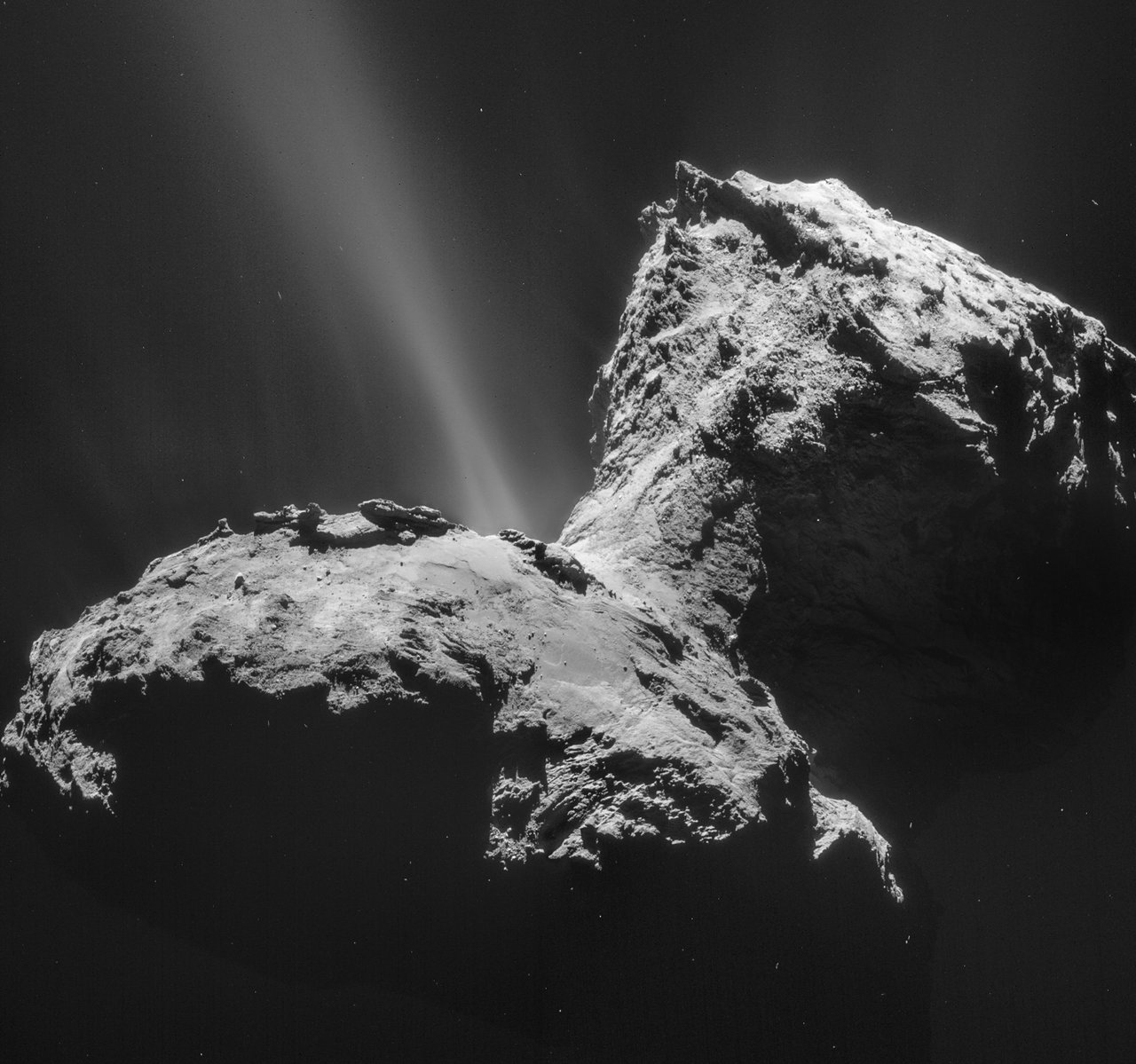67P/Churyumov-Gerasimenko

Discovery
Comet 67P/Churyumov-Gerasimenko was discovered on Oct. 22, 1969, at the Alma-Ata Observatory in Russia. Klim Ivanovic Churyumov found an image of the comet while examining a photographic plate of another comet (32P/Comas Solá) taken by Svetlana Ivanova Gerasimenko on Sept. 11, 1969.
Overview
Comet 67P/ Churyumov-Gerasimenko made history as the first comet to be orbited and landed upon by robotic spacecraft from Earth. The Rosetta spacecraft, carrying the Philae lander, rendezvoused with this comet in August 2014, and escorted it on its journey to the inner solar system and back out again. Rosetta was a mission of the European Space Agency (ESA), and NASA provided key instruments and support. The mission ended with the spacecraft's controlled impact on the comet's surface on Sept. 30, 2016.
Churyumov-Gerasimenko loops around the Sun in an orbit that crosses those of Jupiter and Mars, approaching but not reaching Earth's orbit. Like most Jupiter Family comets, it is thought to have fallen from the Kuiper Belt, a region beyond Neptune's orbit, as a result of one or more collisions or gravitational tugs.
Analysis of the comet's orbital evolution indicates that until the mid-19th century, the closest it got to the Sun was 4.0 AU (about 373 million miles or 600 million kilometers), which is roughly two-thirds of the way from Mars' orbit to that of Jupiter. That far from the Sun's heat, it would not sprout a coma or tails, so it was invisible from Earth.
But scientists calculate that in 1840, a fairly close encounter with Jupiter must have sent the comet flying deeper into the inner solar system, down to about 3.0 AU (about 280 million miles or 450 million kilometers) from the Sun. Churyumov-Gerasimenko's perihelion (closest approach to the Sun) drifted a bit closer to the Sun over the next century, and then Jupiter gave the comet another gravitational kick in 1959. Since then, the comet's perihelion has stood at about 1.3 AU, which is about 27 million miles (43 million kilometers) outside Earth's orbit.
The comet's nucleus is thought to be quite porous, giving it a density much lower than that of water. When heated by the Sun, it is thought to emit about twice as much dust as gas.
Besides collecting a vast amount of data on the properties of the comet, including its interior, surface, and the surrounding gas, dust, and plasma, Rosetta’s key findings included the discovery of water vapor in the comet that is significantly different from that found on Earth, the detection of both molecular nitrogen and molecular oxygen for the first time at a comet, the existence of exposed water ice on the comet’s surface, and the discovery of amino acid glycine (commonly found in proteins) and phosphorus (a component of DNA and cell membranes) in the comet.
How This Comet Got Its Name
67P indicates that this was the 67th periodic comet discovered. Churyumov and Gerasimenko are the names of the discoverers.




